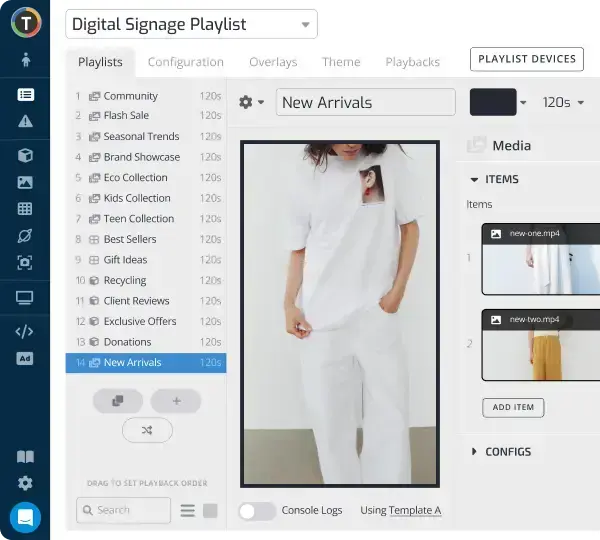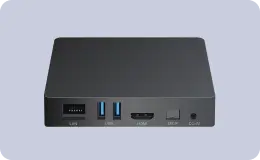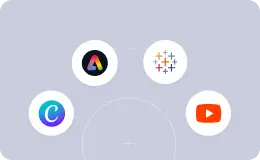7 Steps To Creating a Digital Content Marketing Strategy
WRITTEN BY: TelemetryTV, 05-12-2020

A lot of people who hear “digital content marketing strategy” mistakenly take the phrase for some nebulous, catch-all jargon thrown around by advertisers and content creators. In reality though, those who know marketing know that any effective digital marketing strategy is built around a well-tread and well-defined playbook that’s easy to follow.
But just because it’s relatively straightforward that doesn’t mean it won’t require meticulous planning, deft execution, constant monitoring, fine-tuning, and hopefully some top-notch creativity. And if you want to be like the best content marketing strategists in the biz, keep your finger on the pulse of the top trends, innovations, and technologies defining the industry.
We’re going to let you in on everything we know from what exactly a digital marketing strategy is and how to create one to some of the best content marketing tools and insights.
What is a digital content marketing strategy?
Put simply, your digital content strategy boils down to the planning, creation, management, and deployment of promotional and marketable content in the digital realm. Typically, this digital content—most commonly in the form of social media posts, videos, graphics, or website content—serves to either boost your brand or push a product or service. Or, in best-case scenarios, does both.
How to create a digital marketing strategy: step-by-step
1. Set your goals

The very first thing you need to do when crafting a content marketing strategy is to define your goals and objectives—i.e. what is the purpose of your content. Is it to increase sales? Drive traffic? Boost brand exposure? Etc.
Whatever the case, nail down your goals. Because trust us, knowing the ultimate purpose of your content will inform every other part of your digital marketing strategy, making its whole formulation a much easier process.
2. Identify your customers and where they are
Knowing the intended audience of your digital content is step two. In the world of digital marketing, it’s called your business’ “buyer persona”.
A buyer persona is basically the stereotypical consumer your business wants to market to and move to action. A buyer persona is built using all existing market research and data you have about your current customers—their shopping behavior, attitudes, demographics, locations, web activity, and—of course—their needs and desires.
The more you can pinpoint your target audience with sharp precision and get to know their pain points, the more effective and engaging your digital content will be.
Tools such as online surveys, social media analytics, and lead tracking software help tremendously.
3. KPIs

A digital content marketing strategy isn’t just something you flip on and walk away from. Once it’s in action, it takes constant monitoring and measuring to make sure it’s performing up to snuff.
This typically comes in the form of key performance indicators (KPIs). Put simply, KPIs give your company the ability to gather hard data to determine the effectiveness of your digital marketing strategy.
The most common KPIs are things like lead generation rate, page visitors, time spent on page or viewing media, bounce rate, brand awareness, search engine rankings, social media mentions, and much more. Focus on tracking marketing KPIsthat tie in most to your digital marketing content’s goals.
4. Marketing campaign ideas and digital marketing channels
The next step is considering both what types of content you want to produce and where you will publish that content. In the vast majority of cases, this should be determined by where your target audience congregates online and in what forms they prefer to consume digital media.
When it comes to content format, your brand could opt for media such as videos, social posts, infographics, GIFs, blog posts, banner ads, memes, explainers, you name it. The preferred channel you could post that content on runs the gamut from social media sites like Facebook, Instagram, or Twitter to your own website or a third-party site.
5. Content management
Once you know the type of content you want and where you want to publish it, you then need a content management software (CMS). A CMS will streamline the entire process of creating, managing, and publishing content for your brand.
They also often come with useful tools such as SEO and social media integrations, Google analytics, easy-to-use website UI and content templates, and robust security. Some of the most popular CMS for marketers include HubSpot, WordPress, and Squarespace.
In today’s fast-paced world, it’s also important for digital content marketing strategies to incorporate content calendars. This gives marketers the ability to schedule consistent, unique, and engaging content way ahead of time, which in turn allows more time to be spent on campaign fine-tuning and performance monitoring.
6. Distribute content
Finally, you have a well-concocted digital marketing strategy under your belt. Now, all you need to do is follow that game plan and push out all that highly targeted content with the creative content marketing strategy you created. Just make sure to constantly monitor the data. That way, you can know where your digital content is thriving and where it needs to be improved upon--which brings us to the final step.
7. Measure Your Results
Keeping track of your results is extremely important. That way, you’ll know what is working and what isn’t. You’ll be able to pinpoint the things that are contributing most to your progress, as well as the things that need attention or maybe aren’t working out.
Now that you have the guidelines to set up a highly effective content marketing strategy, make sure you have the best hardware so you can make the most of it--namely, digital signage.
Content marketing solutions with digital signage

Digital signs are the most obvious choice for a wide variety of use cases. So if you’re in the market for a multi-purpose content management system designed with digital signage and advertising in mind its easy to get started:











